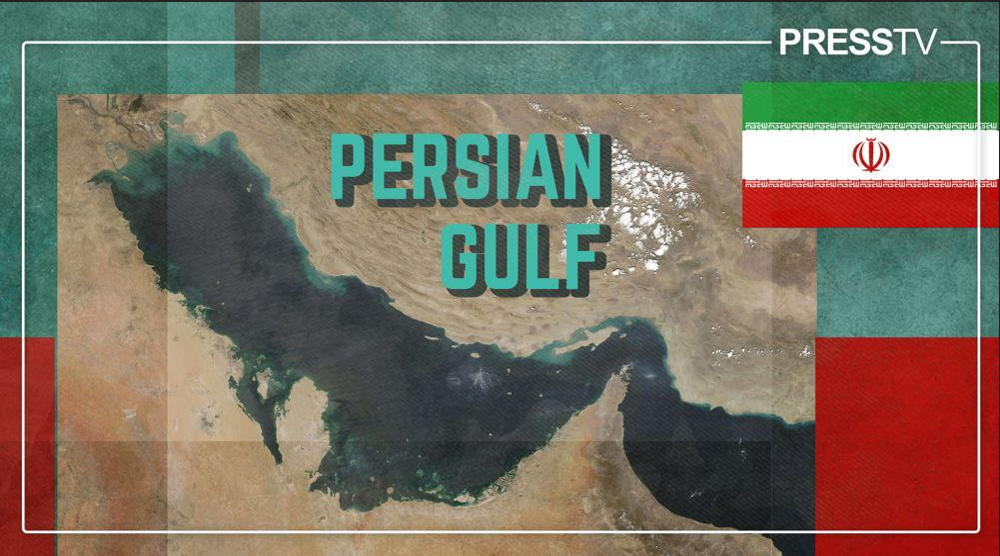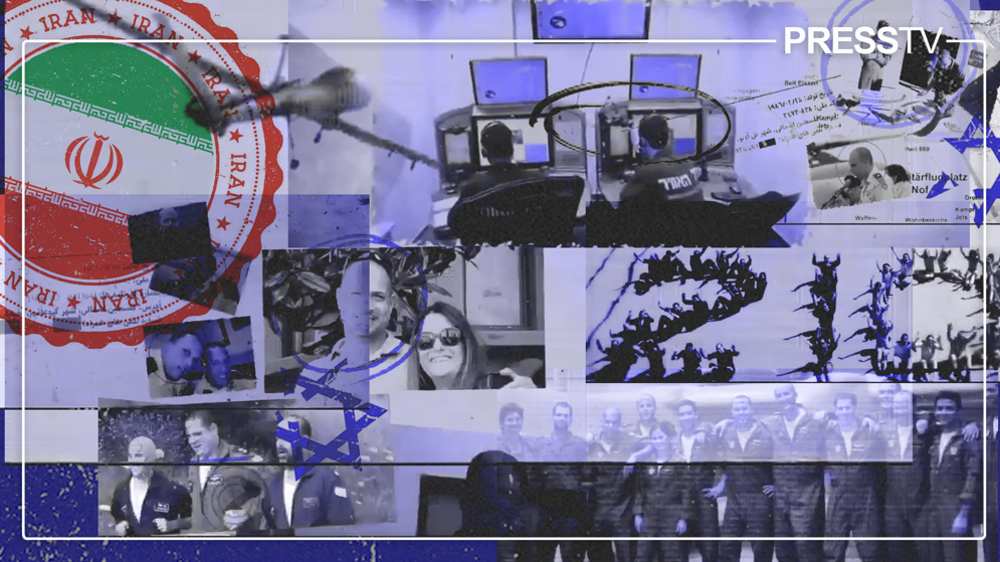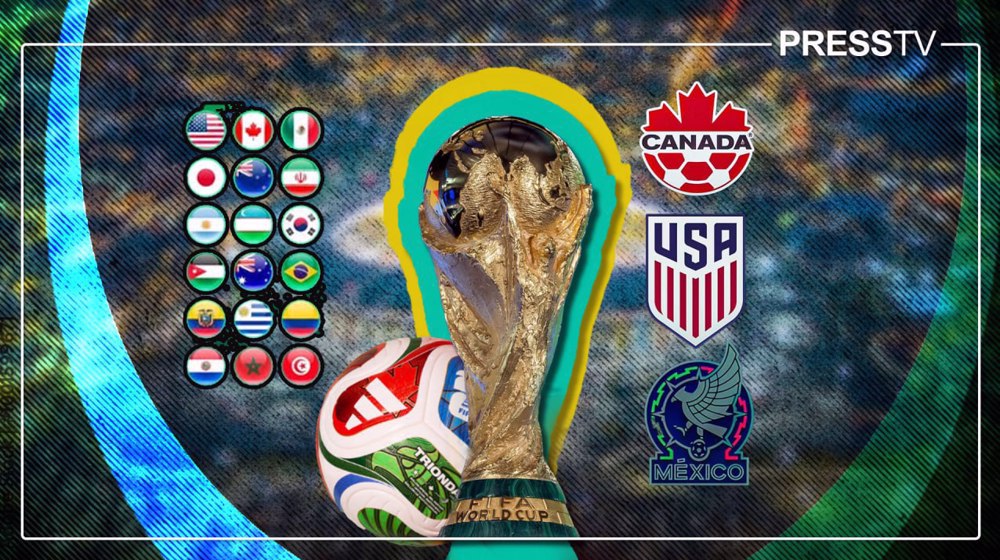Factbox: Can Trump really rename the Persian Gulf steeped in centuries of history?
By Ivan Kesic
Media reports quoted some unnamed US officials on Wednesday as saying that President Donald Trump will announce during his upcoming visit to Saudi Arabia that the US will no longer use the name Persian Gulf, but instead "Arabian Gulf."
The name Persian Gulf has been widely used for this strategic body of water, the third largest gulf in the world, situated between the Arabian Peninsula and southwestern Iran.
However, such a move would not be unprecedented, as the United States Central Command (CENTCOM)—officially designated as a terrorist organization by Iran — recommended back in 2010 that personnel use the term "Arabian Gulf" instead of the original name Persian Gulf.
In January, Trump had signed an executive order directing federal agencies to adopt the new term "Gulf of the Americas" in place of the Gulf of Mexico.
Although this change affected some American services, mapping platforms, and media outlets, it had no impact outside the US, nor did it influence international organizations concerned with hydrographic terminology.
Political commentators believe that, if media speculation proves right, Trump is seeking to flatter Arab countries and provoke Iran by changing the name of the Persian Gulf.
On Wednesday, Iran’s Foreign Minister Abbas Araghchi weighed in, stating that the names of regional waterways do “not imply ownership by any particular nation, but rather reflects a shared respect for the collective heritage of humanity.”
"A cheap political stunt" @Louis_Allday says the term Persian Gulf has been used for centuries, even by Arab rulers, and Trump’s attempt to rename it is just a political stunt not worth discussing.#PersianGulf pic.twitter.com/YOAwkACmbe
— Press TV 🔻 (@PressTV) May 8, 2025
"I am confident that Donald Trump is aware that the name PERSIAN Gulf is centuries old and recognized by all cartographers and international bodies and was even used by all leaders of the region in their official communications until as recently as 1960's," Araghchi said.
"While any short-sighted step in this connection will have no validity or legal or geographical effect, it will only bring the wrath of all Iranians from all walks of life and political persuasion in Iran, the US and across the world," he added.
American journalist and author Max Blumenthal, speaking to the Press TV website on Wednesday, dismissed the idea as "laughable" and likened it to the gimmick of renaming French fries to "freedom fries" by the United States.
British writer and historian Louis Allday, speaking at an event organized by the Sobh International Media Festival in Tehran on Thursday, said the term Persian Gulf has been used for centuries, even by Arab rulers, and Trump’s attempt to rename it is just a political stunt not worth discussing.
How did the Persian Gulf get its name?
The etymology of the Persian Gulf is based on the ancient Iranian region of Persia (Fars) and the Persians who settled its shores as early as the early 1st millennium BC, and the oldest historical document mentioning this hydronym is the Darius Inscriptions from Suez (c. 500 BC).
The name Persian Gulf (Latin: Sinus Persicus) soon became common throughout the Western world, as evidenced by numerous works by ancient Greek, Hellenistic, and Roman authors who simultaneously called the Red Sea the "Arabian Gulf" (Latin: Sinus Arabicus).
The apolitical and historical name persisted even after the fall of the Sassanid monarchy, as is evident from the works of Muslim geographers and cartographers who called the body of water the "Persian Sea" (Arabic: Baḥr Fāris) or the "Persian Gulf" (Arabic: Ḫalīǧ Fāris).
European geographers and cartographers during the Middle Ages and the early modern period also widely used the name "Persian Gulf," although there are a few exceptions due to problems in identifying geographical data, or the mixing of the names of the Persian Gulf, the Arabian Sea, and the Red Sea.
For example, Gerardus Mercator and his successors Jodocus Hondius and Johannes Janssonius in the 16th century named the Red Sea and the Persian Gulf as "Arabian Gulf" (Latin: Sinus Arabicus) on the same maps, although Janssonius later used exclusively "Persian Gulf" (Sinus Persicus) for the latter.
We check today's maps: Persian Gulf. We examine ancient maps: still Persian Gulf.
— Press TV 🔻 (@PressTV) May 1, 2025
For thousands of years, history agrees on its identity. #PersianGulf pic.twitter.com/ZOpfm7diQw
On the other hand, cartographers such as Emanuel Bowen correctly used the name "Persian Gulf" while on the same maps they incorrectly labeled the neighboring Arabian Sea as the "Persian Sea."
These confusions and errors later gave birth to an argument for Arab nationalists in the 20th century about the manufactured historical background of the term "Arabian Gulf" for the Persian Gulf. Other names by which the north of the Persian Gulf was sometimes called include "Gulf of Qatif" and "Gulf of Basra."
The former appears on some European maps, and the latter appeared in the Ottoman Empire after the conquest of southern Mesopotamia and is still used locally in Turkey today (Turkish: Basra Körfezi).
Overall, by 1890, among the 6,000 different historical maps, few exceptions in nomenclature were found, as the vast majority used the term Persian Gulf.
After the British naval victories in the Persian Gulf in 1840, the London magazine The Times triumphantly called it the "British Sea" in an article, but such a name did not catch on anywhere, not even in Britain.
In general, alternative names had no influence on general usage in the world, and the historical name Persian Gulf was actively used in Portuguese, British, Ottoman and Arab documents regardless of political circumstances.
How did the naming controversy start?
Controversies over the name of the Persian Gulf emerged after World War II, with the rise of Arab nationalism in the region, when countries in the Arab world began calling it the "Arabian Gulf."
More specifically, the roots of the dispute date back to the early 1950s when the Iranian-British political conflict erupted over oil concessions.
Charles Belgrave, the British Commissioner for the Arab Protectorates, was the first to openly advocate the use of "Arabian Gulf" as a new name, which soon became generally accepted in Arab nationalist circles.
The Arab League adopted the new name as official, and by the 1960s it had entered all documents and school textbooks throughout the Arab world.
Tensions flared further in the 1970s with the independence of Bahrain, Qatar, and the United Arab Emirates, which insist that the name "Persian Gulf" has political connotations.
Every historic map on display at the Qatar National Museum shows the name "Persian Gulf."
— Press TV 🔻 (@PressTV) May 7, 2025
Follow: https://t.co/mLGcUTS2ei pic.twitter.com/fggO1cC2lK
Iran and hydrographic organizations deny that this is the case, arguing that neighboring seas such as the Gulf of Oman, the Arabian Sea, and the Indian Ocean are also internationally adopted historical names like the Persian Gulf.
The UAE's territorial dispute with Iran ultimately resulted in a legal ban on the use of "Persian Gulf" in the country, and even the erasure of the name from historical maps in Emirati museums.
The Iranian government has protested to international institutions about the Arab moves from the beginning, and some Iranian politicians have described the attempts to change the terminology as "uncivilized."
The Arab politicization of historical nomenclature was partly reflected in certain Western cartographic publications.
For example, the adjective "Persian" is omitted in The Times Atlas, or appears only as "The Gulf", but the historical name "Persian Gulf" has remained intact in most renowned publications, such as the National Geographic Atlas.
The United Nations (UN) and the world's leading cartographic and hydrographic institutes have not succumbed to the Arab politicization of nomenclature, and continue to officially use the established historical name.
A group of experts on toponyms at the UN has declared the Persian Gulf the only correct name, noting that due to historical circumstances the name "Arabian Gulf" can only be used for the Red Sea.
The International Hydrographic Organization (IHO) uses two official names, "Gulf of Iran" and "Persian Gulf."
Pro-Israel group names Tucker Carlson ‘Antisemite of the Year’ over genocide criticism
Sudan’s PM urges UNSC to endorse initiative to end war
Palestinian women beaten, humiliated in Israeli prison: Rights group
Explainer:15 seconds that save lives: Inside Iran’s world-first cancer surgery breakthrough
VIDEO | London Jewish bloc holds Hanukkah action for Palestinian liberation
Israel kills two Palestinians in Gaza City amid repeated ceasefire violations
US House Democrats call for ‘maximum pressure’ on Israel over Gaza truce violations
VIDEO | Press TV's news headlines










 This makes it easy to access the Press TV website
This makes it easy to access the Press TV website